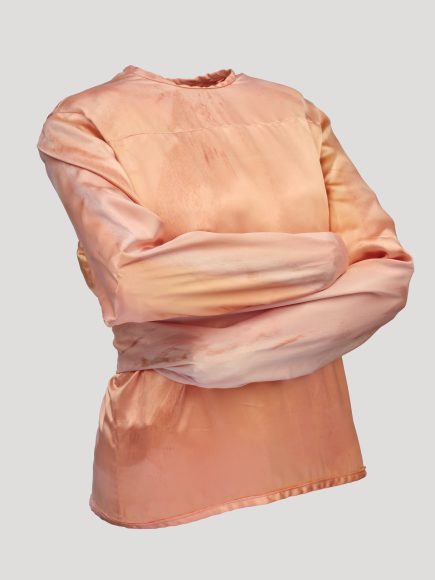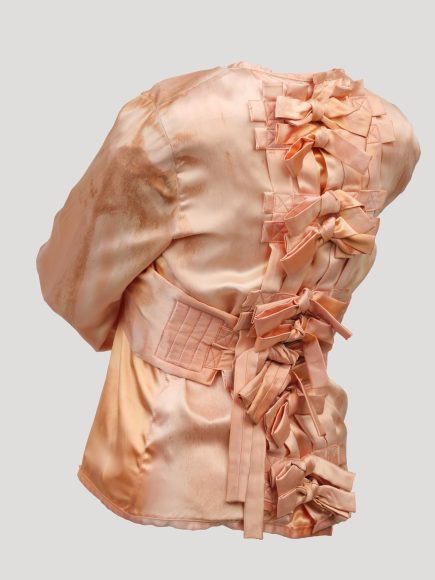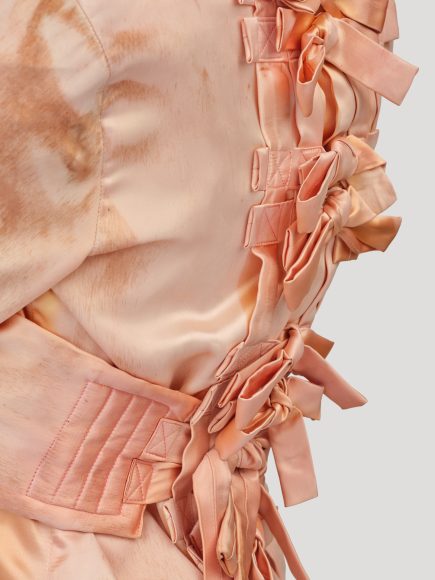20 Aug 2024
Works from the Collection: Kate Craig’s Straight Jacket
-
Kate Craig
Kate (Catherine) Shand Craig (Canadian, 1947-2002) was a multimedia artist whose work spanned costume, film, performance and photography. Craig experimented with role-play and costumes in performance and video. She adopted the camera as a mediating device to challenge the conventions of realist narratives around the female body and the natural landscape. After graduating from Dalhousie University in 1964, Craig met the artist Eric Metcalfe in 1967 while attending the University of Victoria. Together, they assumed the personas of Lady Brute and Dr. Brute and became involved in mail art networks, including Image Bank, International Image Exchange Directory and the first International Satellite Exchange Directory. In 1973, Craig co-founded the Western Front Society along with Martin Bartlett, Mo van Nostrand, Henry Greenhow, Glenn Lewis, Eric Metcalfe, Michael Morris and Vincent Trasov. While serving on the board of directors at the Western Front from 1973 to 1993, Craig curated the Artist-in-Residence Video Program, which provided local and international networks for artists. Her works have been presented nationally and internationally in exhibitions and can be found in the collections of the Art Gallery of Greater Victoria, Museé d’Art Contemporain de Montréal and the National Gallery of Canada.
Read More
By Anna Be and Jeffrey Boone, 2024
“The straight jacket I designed and made out of hot pink acetate satin. (It was to be of silk but at $32.00 a yard what can a poor girl do!) The camera is stationary and the focus fixed; it is the straight jacket and the single light source that move.”1 – Kate Craig
A founding member of Western Front, Kate Craig, like many of her collaborators and fellow artists, developed personas that brought together multidisciplinary experimentation that synthesized art and life through avant-garde practices. One of Craig’s personas was characterized by the colour pink, referencing traditional ideas of feminine identity. To Craig, pink was a radical colour that she reinvigorated in many of her projects, questioning its diminishing status. In Kate Craig: Skin, Grant Arnold quotes Craig: “As a woman, why would you associate yourself with pink if you had any kind of feminist point of view? It was sort of retro.”2 Craig later went on to say that “pink clothing was extremely useful because it disarmed people. Psychologically […] pink is used as a colour to calm people.” Craig thought that the “prejudice against pink is unreasonable” and that Straight Jacket acts to face that prejudice head-on.3
Before her career as an artist, Craig wanted to become a costume designer due to her theatre background. In creating the straitjacket in an opulent pink satin, festooned with a line of double bows down the back, Craig collapsed traditional ideas of femininity into an institutional device for control. Craig recounts, “[The straitjacket] is beautifully made. The stitching is gorgeous. It is quite elaborate the way the ties are sewn. Because of the amount of sewing, it is extremely strong. You could never get out of that thing. It really is a straitjacket. The satin acetate is a really heavy material. Straitjackets are made out of, almost like canvas, very tight material.”4 Craig’s goal was to highlight the contradiction of a straitjacket being made of delicate, pink satin, and showcase “the ironic relationship between freedom and limitation.”5
The video work Straight Jacket was produced at Western Front and first screened there on 1 August 1980, and subsequently in 1982 at Festival ‘82 (A Celebration of Women in the Arts) and 1983 at Vancouver Art & Artists at the Vancouver Art Gallery.⁶ The video shows Craig modeling the pink straitjacket. The image is framed so that the garment fills the frame. Lit with a single spotlight, only the garment is visible in an otherwise black space. Craig rotates, displaying how the bespoke item fits her body. The sound consists of Craig’s voice reading (or singing?) words she wrote for the film, accompanied by a piano and a bass, transcribed here:
Inside out, inside out, the world is inside out
Inside out, inside out, love me inside out
planet turning in a jacket
Total torture off the rack
Some get paid off, some get laid off
Ideology is for fools
Inside out, inside out, the world is inside out
inside out, inside out, love ne inside out
The human race is out of date
Mutate, mutate
But me in your prison cell and leave me inside out
Inside out, inside out, the world is inside out
Inside out, inside out, leave me inside out
I believe in time, but I know it travels backward
Pumping oil and spilling power
I’m all done up now, lock me up
Inside out, inside out, leave me inside out
Condition pink, Mr. President
Killing time
Take me away and lock me up
Ideology is for fools
It fits me oh so perfectly
And keeps me calm and cool
Inside out, inside out, leave me inside out
Inside out, inside out, the world is inside out
Push the panic button
can’t do what I do
Twist and turn in pink and black out
The world turning in her Jacket
Black and pink and pink and black
Back to front and front to back
Junkies of the world unite
Try a new hallucination
Neutron bomb and Uncle Tom
Relax arms, limitation
Relax, arms limitation
Inside out, inside out, leave me inside out
Inside out, inside out, love me inside out7
Works from the Collection considers works in the Belkin’s permanent collections in conversation with ongoing exhibitions, programs and the world around us. This entry is part of a series written by students in the 2023/24 Seminar in Contemporary Contextual Issues for Museums and Curatorial Practice led by Nikki Georgopulos (CCST 501). Students worked with the Belkin’s Naomi Sawada, Teresa Sudeyko and Anna Tidlund to condition report, research and write descriptions about Kate Craig’s costumes that were recently gifted to the Belkin by Western Front and Hank Bull. To see more of the Belkin’s collections, visit belkin.ubc.ca/collection.
Images (from top): Kate Craig, Straight Jacket (film still), 1980. Courtesy of Western Front; Kate Craig, Straight Jacket, 1980. Collection of the Morris and Helen Belkin Art Gallery, Gift of the Western Front and Hank Bull. Photo: Rachel Topham Photography. Costume support: Ken Labun.
-
Kate Craig
Kate (Catherine) Shand Craig (Canadian, 1947-2002) was a multimedia artist whose work spanned costume, film, performance and photography. Craig experimented with role-play and costumes in performance and video. She adopted the camera as a mediating device to challenge the conventions of realist narratives around the female body and the natural landscape. After graduating from Dalhousie University in 1964, Craig met the artist Eric Metcalfe in 1967 while attending the University of Victoria. Together, they assumed the personas of Lady Brute and Dr. Brute and became involved in mail art networks, including Image Bank, International Image Exchange Directory and the first International Satellite Exchange Directory. In 1973, Craig co-founded the Western Front Society along with Martin Bartlett, Mo van Nostrand, Henry Greenhow, Glenn Lewis, Eric Metcalfe, Michael Morris and Vincent Trasov. While serving on the board of directors at the Western Front from 1973 to 1993, Craig curated the Artist-in-Residence Video Program, which provided local and international networks for artists. Her works have been presented nationally and internationally in exhibitions and can be found in the collections of the Art Gallery of Greater Victoria, Museé d’Art Contemporain de Montréal and the National Gallery of Canada.
Read More
End Notes
This quote by Kate Craig was included with an earlier upload of Craig’s 1980 performance video Straight Jacket on Western Front’s website. Straight Jacket can be viewed here: https://westernfront.ca/archives/get/ca_occurrences/184.
Kate Craig, Grant Arnold, Nicole Gingras and Brice Canyon, Kate Craig: Skin (Vancouver: Vancouver Art Gallery, 1998), p. 5.
Hank Bull, Kate Craig and Sharla Sava, “Skin: A Conversation with Kate Craig, Hank Bull and Sharla Sava,” Boo Magazine, No. 11 (1998): 8-13. Morris and Helen Belkin Art Gallery Archives, Boo Magazine fonds (20.0.26).
Boo Magazine: 8-13.
Western Front, Whispered Art History, Twenty Years at the Western Front, edited by Keith Wallace, Vancouver: Arsenal Pulp Press, 1993.
Boo Magazine: 10 and Kate Craig, Curriculum Vitae, 1996.
Hank Bull, Kate Craig, Elizabeth Chitty, Andy Graffiti and Mary Ready, Straight Jacket, filmed 1980, 7 m 8 s. Straight Jacket can be viewed here: https://westernfront.ca/archives/get/ca_occurrences/184.
Related
-
News
30 Oct 2023
Works From the Collection: Glenn Lewis and Kate Craig
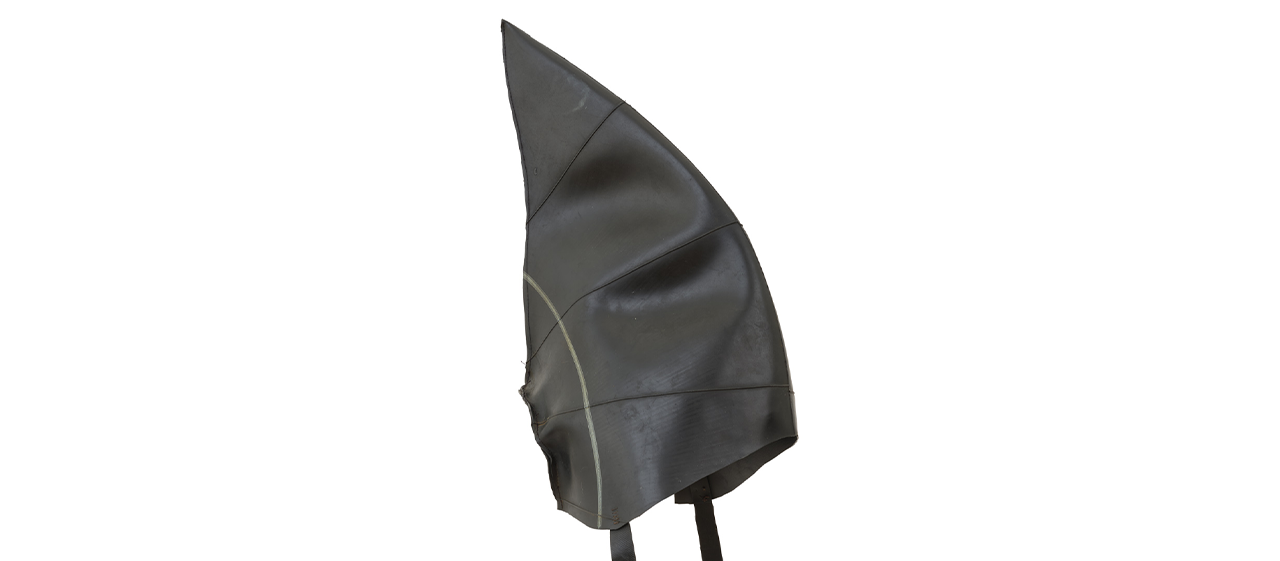 [more]
[more] -
News
09 Aug 2023
Works from the Collection: Bud Lee
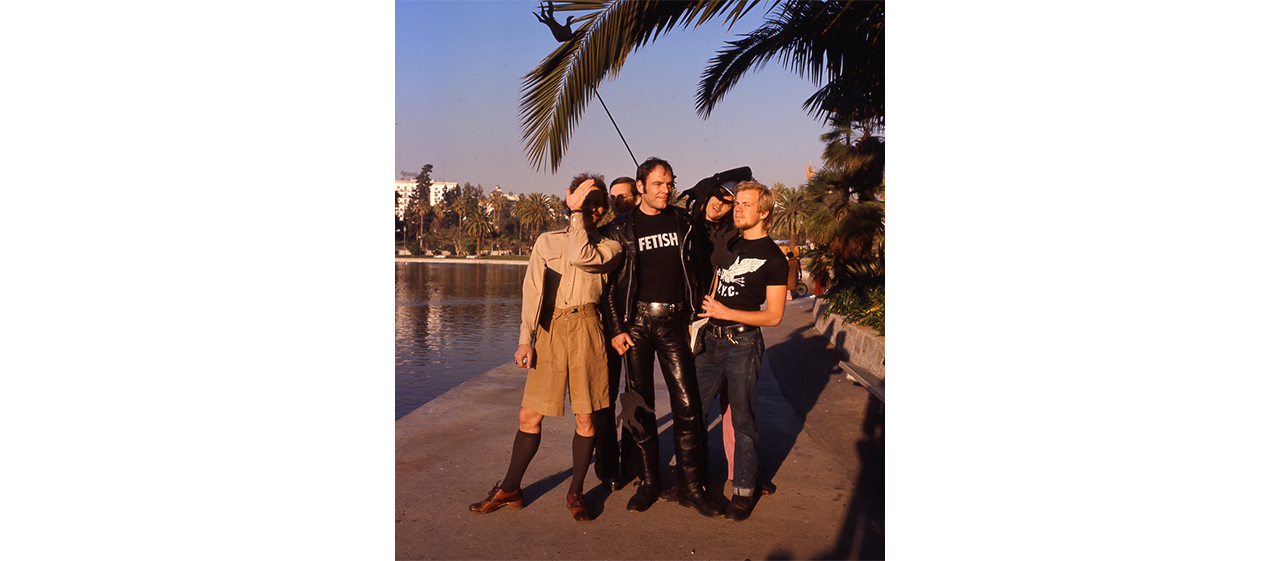
This photograph will be reproduced for both the exhibition and the catalogue of the Brooklyn Museum’s show Copy Machine Manifestos: Artists Making Zines, opening on 17 November 2023.
[more] -
Exhibition
18 Jun – 22 Aug 2021
Image Bank
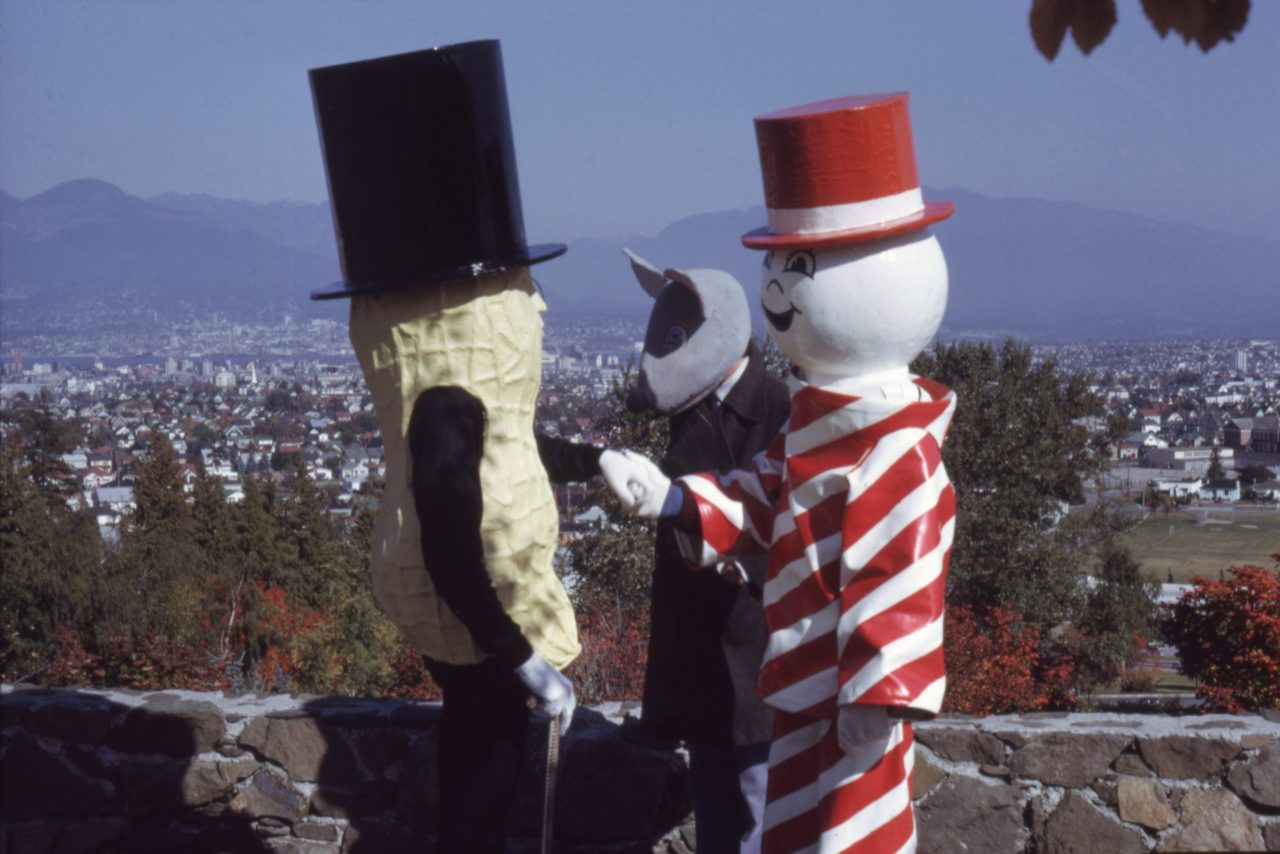
Image Bank explores the artistic collaboration of Michael Morris and Vincent Trasov with others, including their most spectacular works – extended performances with props, such as Colour Bar Research (1970-78) and Mr. Peanut’s mayoralty campaign (1974) – alongside their extensive mail-art exchanges with other networkers such as Robert Filliou, Ant Farm and Ray Johnson’s New York Correspondence School. The Peanut campaign, in which Vincent Trasov as Mr. Peanut ran for mayor of Vancouver, mobilized the artists associated with the newly founded artist-run centre, the Western Front (est. 1973) and the exhibition includes many collaborations with and amongst these artists (Martin Bartlett, Hank Bull, Kate Craig, General Idea, Gary Lee-Nova, Glenn Lewis, Eric Metcalfe, John Mitchell and others). The exhibition pulls films, photographs, drawings, collages and other ephemera from the Belkin’s Morris/Trasov Archive to track the collaborative history of Image Bank. Founded in 1970 and lasting to 1978, Image Bank was a project initiated by Michael Morris, Vincent Trasov and Gary Lee-Nova that originated when they were all associated with the legendary Vancouver artist-run centre Intermedia. The exhibition reflects on a period of optimism where artists envisioned a non-hierarchical alternative to the world of art galleries and museums, where images and ideas could be freely exchanged through the international postal system thereby creating an open-ended and decentralized method of networking that presages social media.
[more]
